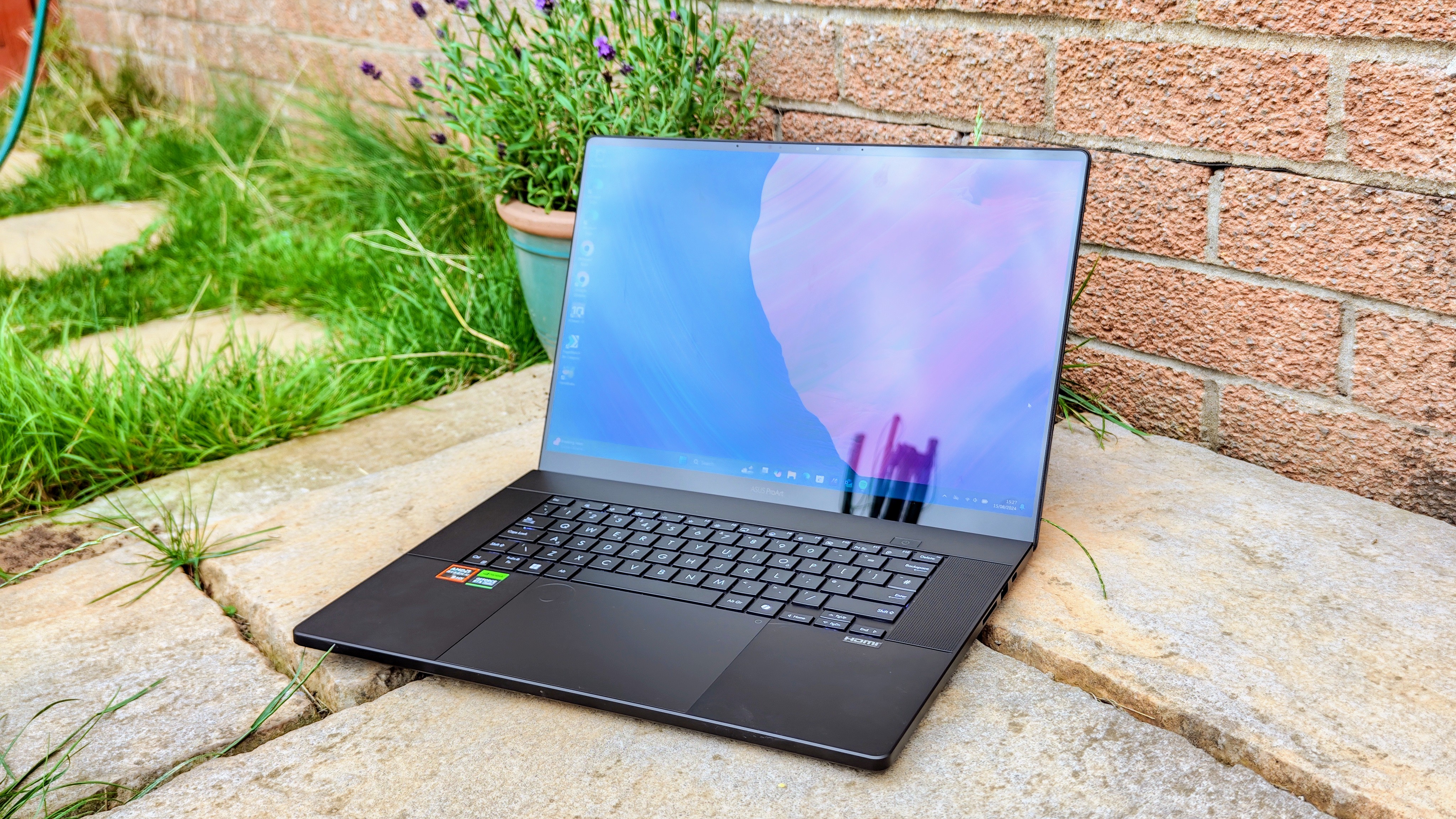Our Verdict
The ASUS ProArt P16 is the flagship of ASUS' new ProArt range for creative professionals, and proudly succeeds last year's mighty Studiobook as a powerful, feature-rich, studio-ready leader to rule the varied laptop tribes beneath it. The gorgeous OLED touchscreen complements fearsome internals, which include a 40-series graphics card, an AMD-made NPU and up to 64GB of high-bandwidth RAM. It squares up to even the mightiest among laptops, the MacBook Pro, and if you ask me, comes out victorious.
For
- Very power
- Beautiful screen
- Perfect for creatives
Against
- Smudge City
- Not the prettiest design
Why you can trust Creative Bloq
This may anger my many Apple-loving friends on Creative Bloq but the ASUS ProArt P16, which I've had in for review over the last three weeks, takes direct aim at the MacBook Pro, head-on, and beats it. It's as simple as that.
"Well, that's just like, your opinion, man," you might say, and yes, that's true. That's all I can offer. I can't, nor can anyone else for that matter, be a supreme, definitive, objective authority on what the best laptop, especially for graphic design and other creative ventures is. What I can do, however, is explain my reasons for my subjective opinion.
And to support my case, I have three weeks' experience of using the ASUS ProArt P16 as my daily work laptop, where I've not only run benchmark tests including standard Cinebench, Blender Benchmark, 3DMark and PugetBench runs, our bespoke Handbrake test, where we encode a 10-minute 4K animation, and others, but also worked in creative software myself on real-life projects, played games after hours and subjected the laptop to as many apps running at once as it will allow. And after that experience, I'm pretty certain of my opinion.
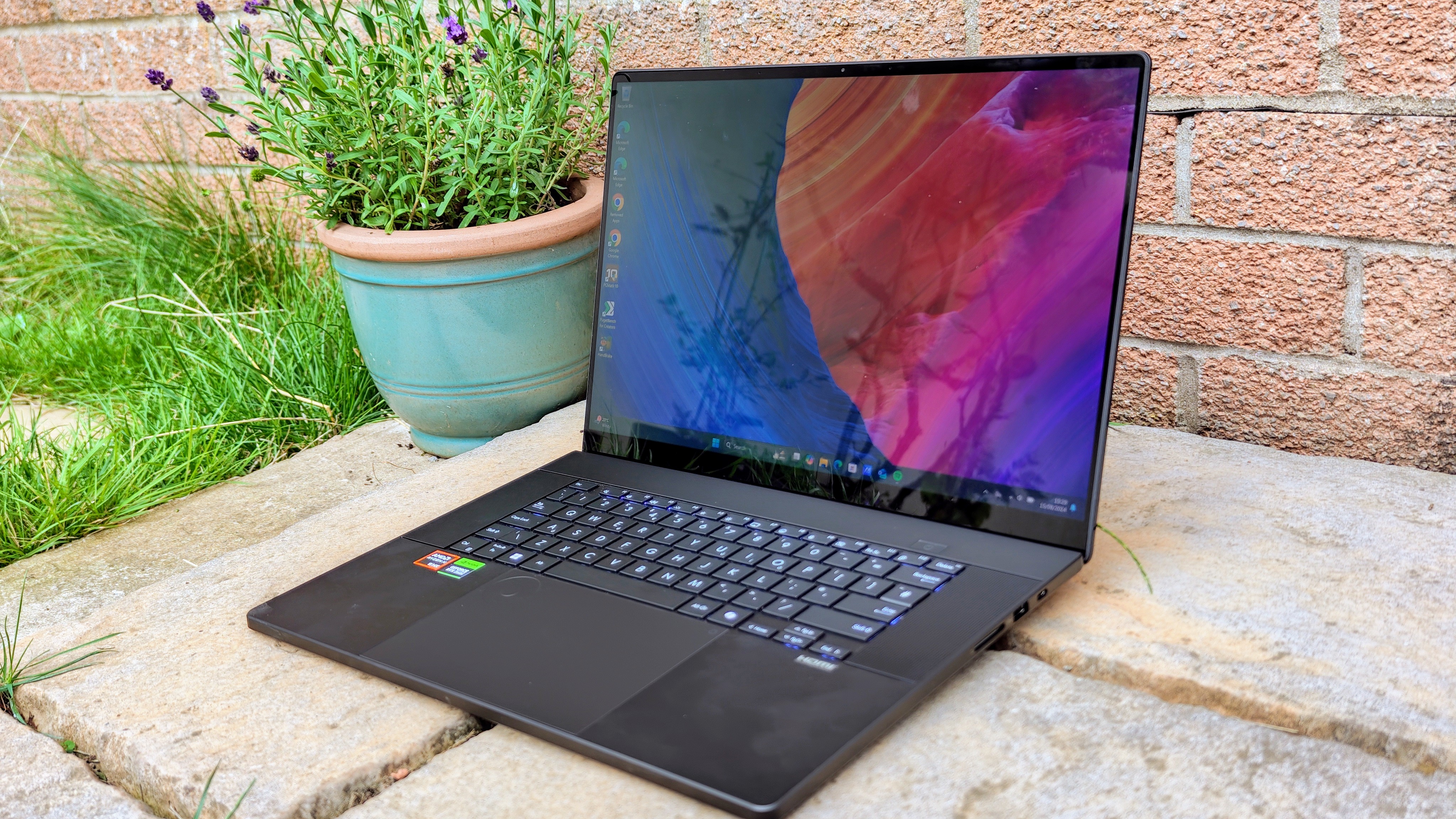
ASUS ProArt P16 review: Key specifications
| CPU: | AMD Ryzen AI 9 HX 370 |
| NPU: | AMD XDNA 50 TOPS |
| Graphics: | NVIDIA GeForce RTX 4070 Laptop GPU |
| Memory: | 32/64GB LPDDR5X RAM (64 as tested) |
| Screen size: | 16in OLED |
| Resolution: | 3840x2400 |
| Refresh rate: | 60Hz |
| Colour gamut (stated): | 100% P3 |
| Storage: | 2TB SSD |
| Connectivity: | 1x USB 3.2 Gen 2 Type-C, 2x USB 3.2 Gen 2 Type-A, 1x USB 4.0 Gen 3 Type-C, 1x HDMI 2.1 FRL, 1x 3.5mm Combo Audio Jack, 1x DC-in, 1x SD Express 7.0 card reader |
| Dimensions: | 35.49 x 24.69 x 1.49 ~ 1.73 cm |
| Weight: | 1.85kg |
Design and build
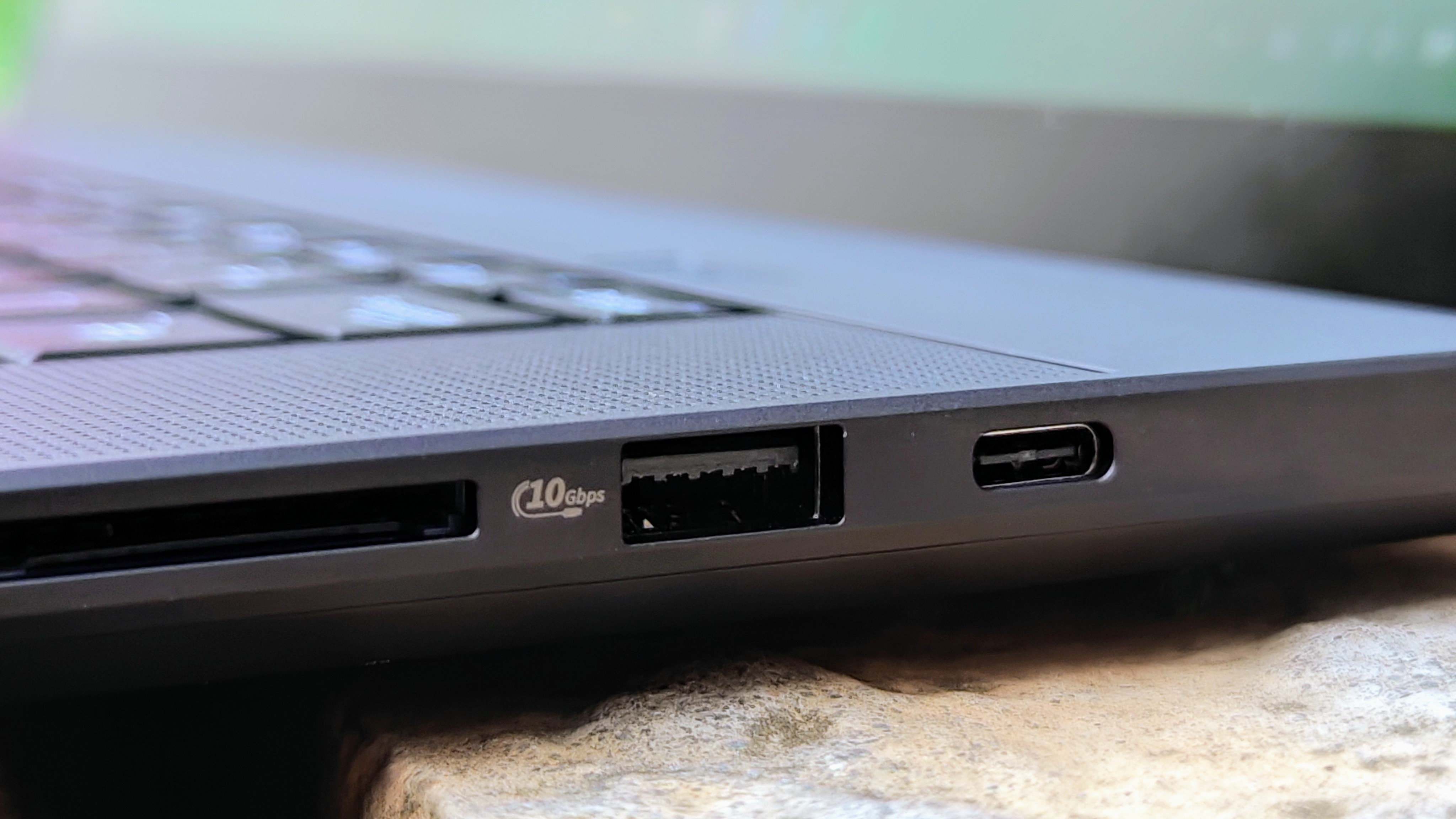
Externally, this year's ProArt P16 is near-identical to last year's Studiobook, with a 16-inch OLED screen, a large touchpad and a well-spaced, responsive backlit keyboard, wrapped in a black chassis that's only slightly less blocky than the 2023 Studiobook. It's also lighter at 1.85kg.
There's also the ASUS Dial, my favourite laptop invention of the last two years, tucked away in the corner of the touchpad. It's integrated into the pad now instead of being a separate physical dial, but it's still ace, and offers quick satisfaction when changing brush sizes in Photoshop by simply twirling your finger around it, or indeed serving any other programmable function you can think of.
Admittedly, the exterior isn't the most inspired, all traditional charcoal-y black, a big, chunky lid and rather thick base (you gotta fit all that power somewhere, right), with the only design flair consigned to a corner of the lid, where, if you squint, you'll see a subdued ProArt logo. It's a laptop made for the work to be done on it, not to advertise that you have a really cool laptop (though ASUS has form for that too, with its striking Zenbooks).
The selection of ports is plentiful, with HDMI 2.1, two USB-A and two USB-C ports (one of which is a Gen 3 USB 4.0), alongside a DC-in, combo audio jack and an SD Express 7 card reader, because filmmakers and photographers deserve a little port of their own, as a treat.
Daily design news, reviews, how-tos and more, as picked by the editors.
The screen is ASUS' famous OLED offering, with touchscreen and ten-point touch recognition functionalities, spanning a generous 16 inches, with a glorious 4K resolution. ASUS really are going all out here.
Features
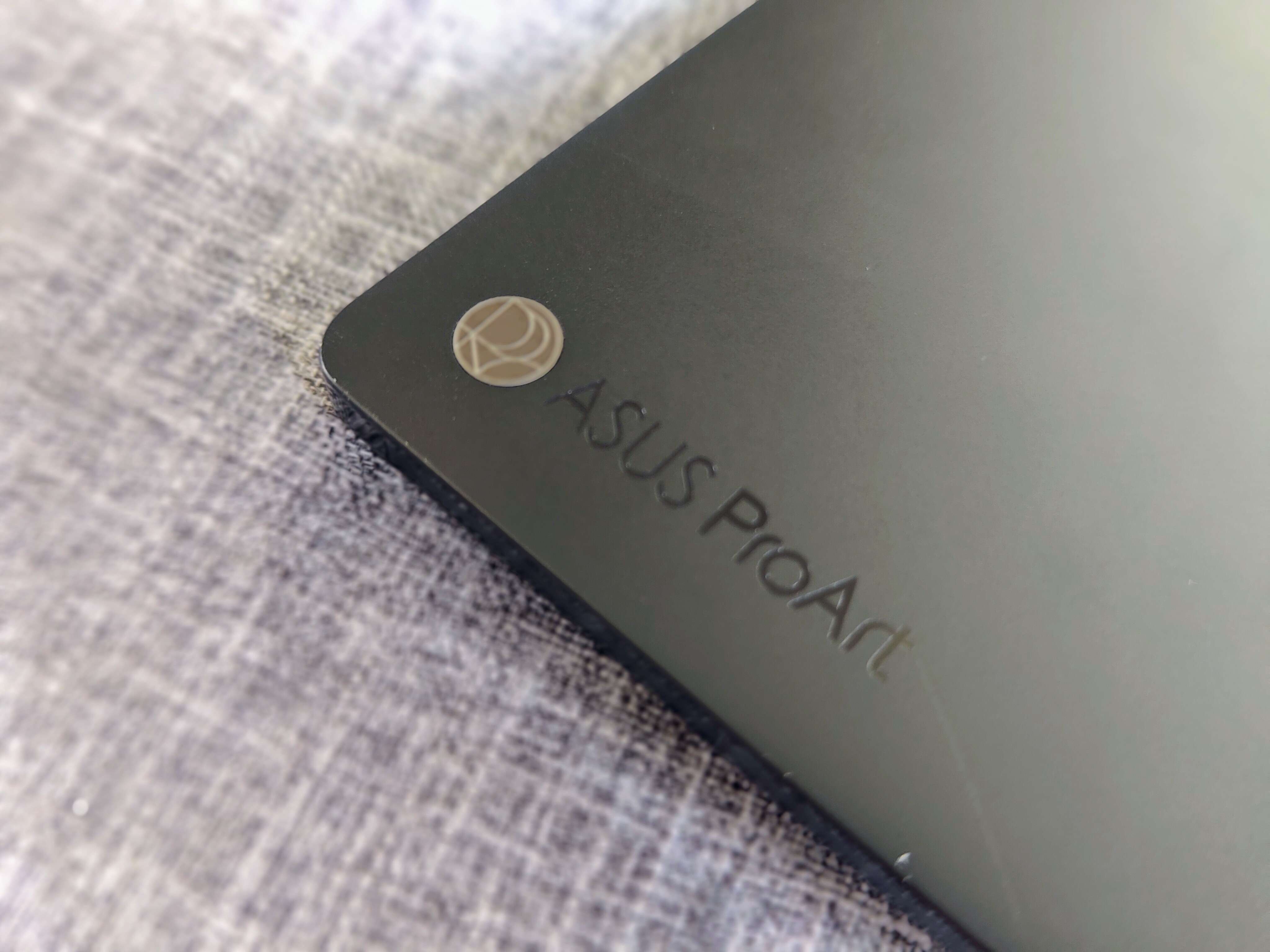
On the inside, we have the AMD Ryzen AI 9 HX 370 CPU, supported by the new AMD XDNA NPU, which is capable of up to 50 TOPS, considerably more than the Intel Core Ultra CPU/NPU chipsets introduced at the start of this year. This is good news for the power and application efficiency onboard, as this NPU intuitively distributes power from the CPU more clever-like to where it's needed, as well as extending its battery life, which is an area where Windows laptops have long trailed Apple.
The CPU has 12 cores and 24 threads, so is comparable to the M3 Pro chip from Apple (but placed a little below the M3 Max), and to help it do its job we have up to 64GB of LPDDR5X RAM (you can choose between 32 and 64) and an NVIDIA GeForce RTX 4070 Laptop GPU for 8GB of visual punch. Of course, being a ProArt model (rather than an ASUS Strix or ROG), it comes installed with Studio drivers rather than the game-ready ones (though that can always be changed manually), but prospective gamers should note that the OLED screen's refresh rate tops out at 60Hz, which underlines ASUS' focus on studio pros rather than FPS egaming champs here.
Special mention must also be made for the ProArt Creator Hub, a space designed for creatives that has been expanded considerably this year with new AI-powered tools.
These include StoryCube, which is essentially a dedicated organising space for all your media that will use AI recognition tech to sort it by anything you like. Want all images taken in Birmingham? It'll get them right up for you. Looking for all the time-lapse videos you have? Not a problem. Want to spend some time looking exclusively at images with dogs in them? Got you fam.
Another new tool, and possibly my favourite of the lot, is MuseTree, a genius little workflow aid and generative-AI art application that runs on Stable Diffusion. In it, you can either prompt the program to generate a picture in as much (or little) detail as you like, as well as do your own sketches (directly on the screen, as it's a stylus-supporting touch one) and have MuseTree elaborate on them, give you stylised variants of your boxy car drawing or steampunk up your pencil portrait. It also presents and organises all this in a tree-like structure, allowing you to work on iterations of images, go off on tangents and retrace your steps if you find yourself off-track in your process. It's not quite perfect yet, but it's got amazing potential as a collaborative art AI rather than one that simply conjures up things for you (and not always ethically so). If it can further evolve into that co-working direction, even towards helping talentless schmucks like me improve their own drawing or design skills, we're looking at a real paradigm shift here.
Benchmark scoring
| Geekbench 6 | Row 0 - Cell 1 |
| CPU single-core: | 2,859 |
| CPU multi-core: | 14,931 |
| GPU OpenCL: | 101,004 |
| Cinebench 2024 | Row 4 - Cell 1 |
| CPU single-core: | 115 |
| CPU multi-core: | 1,103 |
| GPU: | 10,182 |
| PCMark 10 | Row 8 - Cell 1 |
| Total: | 7,496 |
| Essentials: | 9,737 |
| Productivity: | 9,701 |
| Digital Content Creation: | 12,103 |
| 3DMark | Row 13 - Cell 1 |
| Time Spy: | 10,422 @ 67.5fps |
| Fire Strike: | 24,322 @ 138.2fps |
| Night Raid: | 39,460 @ 259.1 fps |
| Handbrake: | 3m18s @ 96.2 fps |
| PugetBench | Row 18 - Cell 1 |
| Photoshop 25.11.0 | 8,810 |
| Premiere Pro 24.5.0 | 7,952 |
Performance
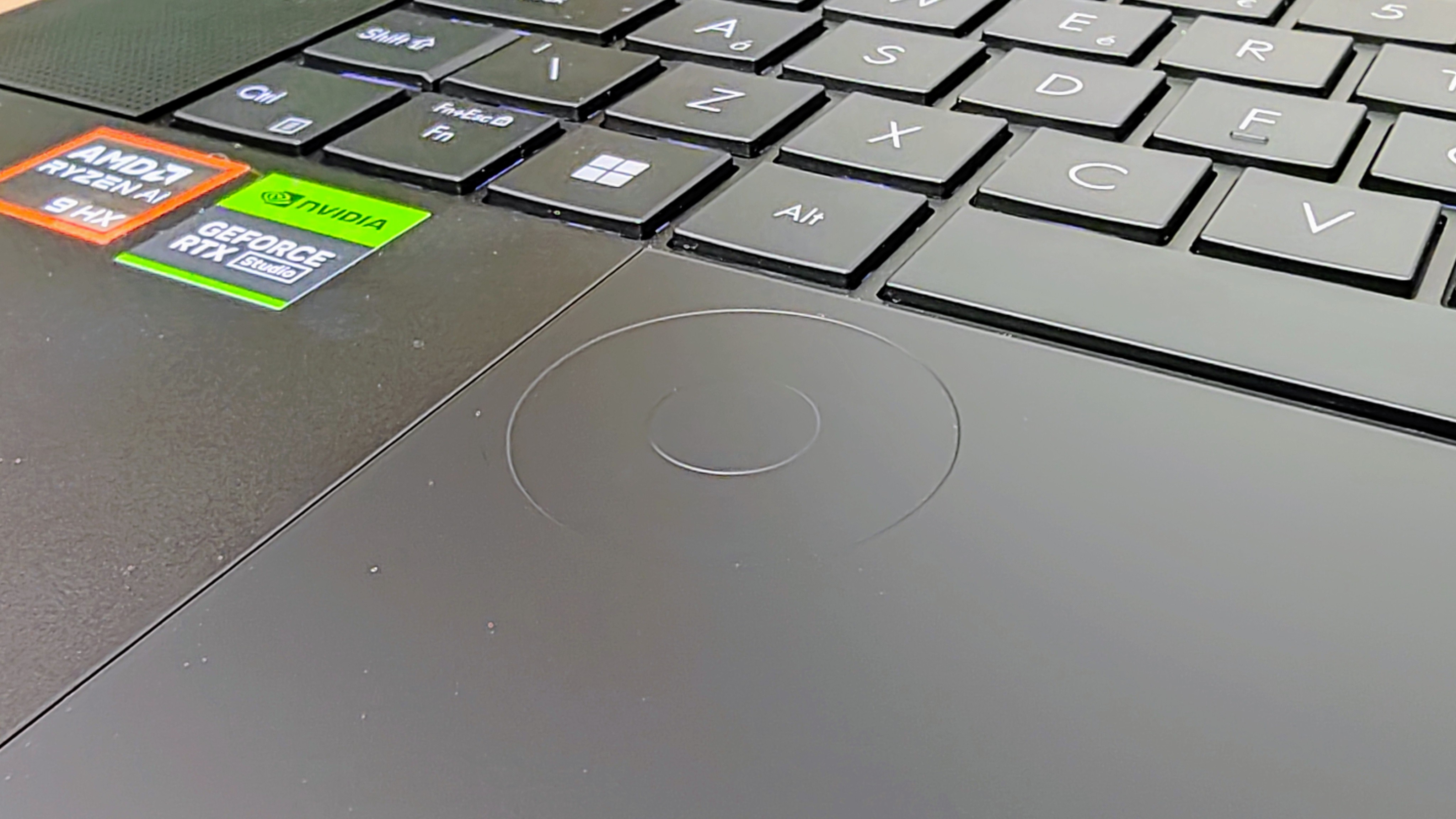
I'm pretty sure you won't find a more capable pro laptop for under £/$3,000 than the ProArt P16. With benchmark scores that in many cases rival (and sometimes outdo) the near-$4,000 MacBook Pro M3 Max, it's ready for any studio, be it a graphic design, 3D modelling or film company, and with that sort of power on board, you're future-proofing your computer's performance for several years.
PCMark testing shows how strong an overall performer it is, with top-level scores in all categories, excelling the most in Digital Content Creation thanks to its combination of a 4070 graphics card and a dedicated NPU.
Cinebench testing and Handbrake video encoding testing puts it ahead of any other laptop south of £/$3,000, with only the top-spec Predator Helios 18 and the M3 Max MacBook Pro outdoing it. It even outscores the Helios model (which is a dedicated gaming behemoth) in some 3DMark gaming tests, which is a further testament to its 3D-modelling prowess (but gaming smoothness is a little bit capped by the 60Hz top refresh rate).
PugetBench scores are also mighty, with results for both Photoshop and Premiere Pro well above £/$2000ish laptops like the HP Omen Transcend 14 and M3 MacBook Pro, outdone only by the far more expensive M3 Max-chipped Apple offering on my list.
Away from the benchmark tests, I had a fantastic time with the ProArt P16, effortlessly loading and running several demanding applications at the same time in time-sensitive, real-life situations at work.
The OLED touchscreen also performed impeccably, responding well to inputs and providing 396 nits of whole-screen brightness in my test (out of a stated 400), with partial-screen, localised numbers much higher as is the custom with OLEDs. The colour gamut is brilliant too, with 100% of Adobe RGB, 97% of sRGB and 100% of P3 coverage in my testing, using the Datacolor Spyder X2 Ultra colorimeter.
If there's anything to note, it's that the touchscreen is very smudge-prone, but even the best-coated OLED touchies suffer from that problem. So get your best soft cloth out and at the ready, everyone. You'll need it.
Battery life is much improved on the previous model and shows Windows-powered laptops are catching up to Apple there, as my streaming-video test eked 10 hours and 23 minutes out of it. That's still a little below the MacBooks, so there's still to room to improve for ASUS there, but good progress has been made.
Price
ASUS is currently offering the ProArt P16 for £2,599 in the UK with 32GB RAM and $2,699 in the US with 64GB RAM. Shop around or customise some specs and you might both find marginally better deals and the price go up (especially in the UK if you want 64GB of RAM), but this is a competitive price for a studio laptop that will last a demanding professional for years. Even better, of course, if you find it discounted (which won't happen until Christmas at the earliest, I think, as it's brand-spanking-new), so keep an eye on our snazzy Hawk deals widget below.
Who is it for?
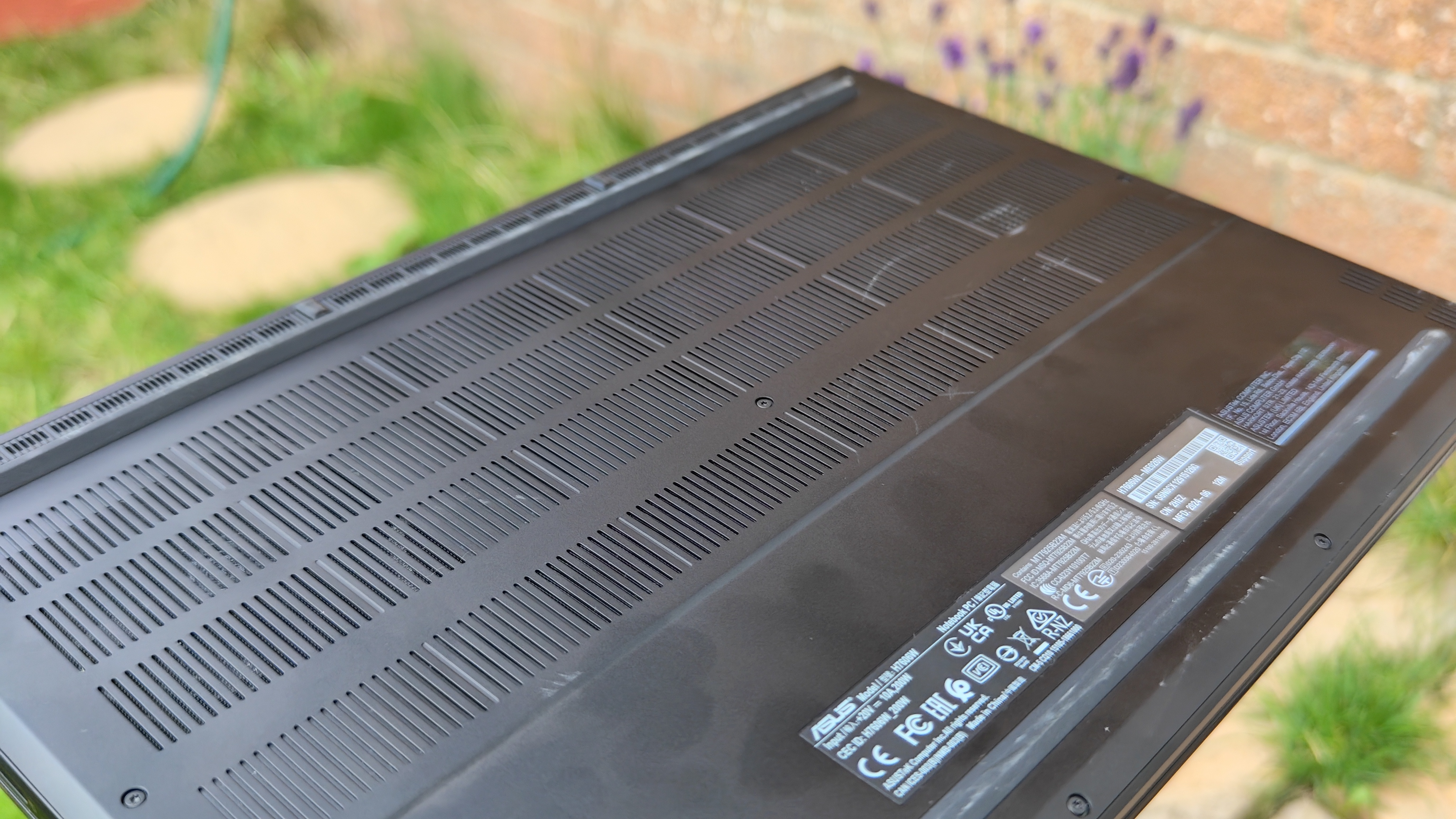
Serious creative professionals. Simple as that. Even though the ASUS ProArt P16 is cheaper than the god-spec MacBook Pro, it's still hella expensive, setting you back two and a half grand at least, so you need a solid business reason to buy one. But it really doesn't matter what kind of creative pro you are; the ProArt P16 will dazzle with its video and photo presentation thanks to that amazing screen, be perfect for graphic designers (touchscreen and lots of grunt inside), it crunches through 3D software like Godzilla through cardboard and it can also run every game under the sun at top graphic specs (as long as you don't mind the 60Hz refresh rate cap). However, if you don't need all the power all the time, there are cheaper options (even within the ProArt range).
Buy it if:
- You need a powerful pro laptop
- You are a studio
- You love big sharp touchscreens
Don't buy it if:
- You want flashy laptop design
- You don't need all this juice
- You need more than 60Hz refresh rate
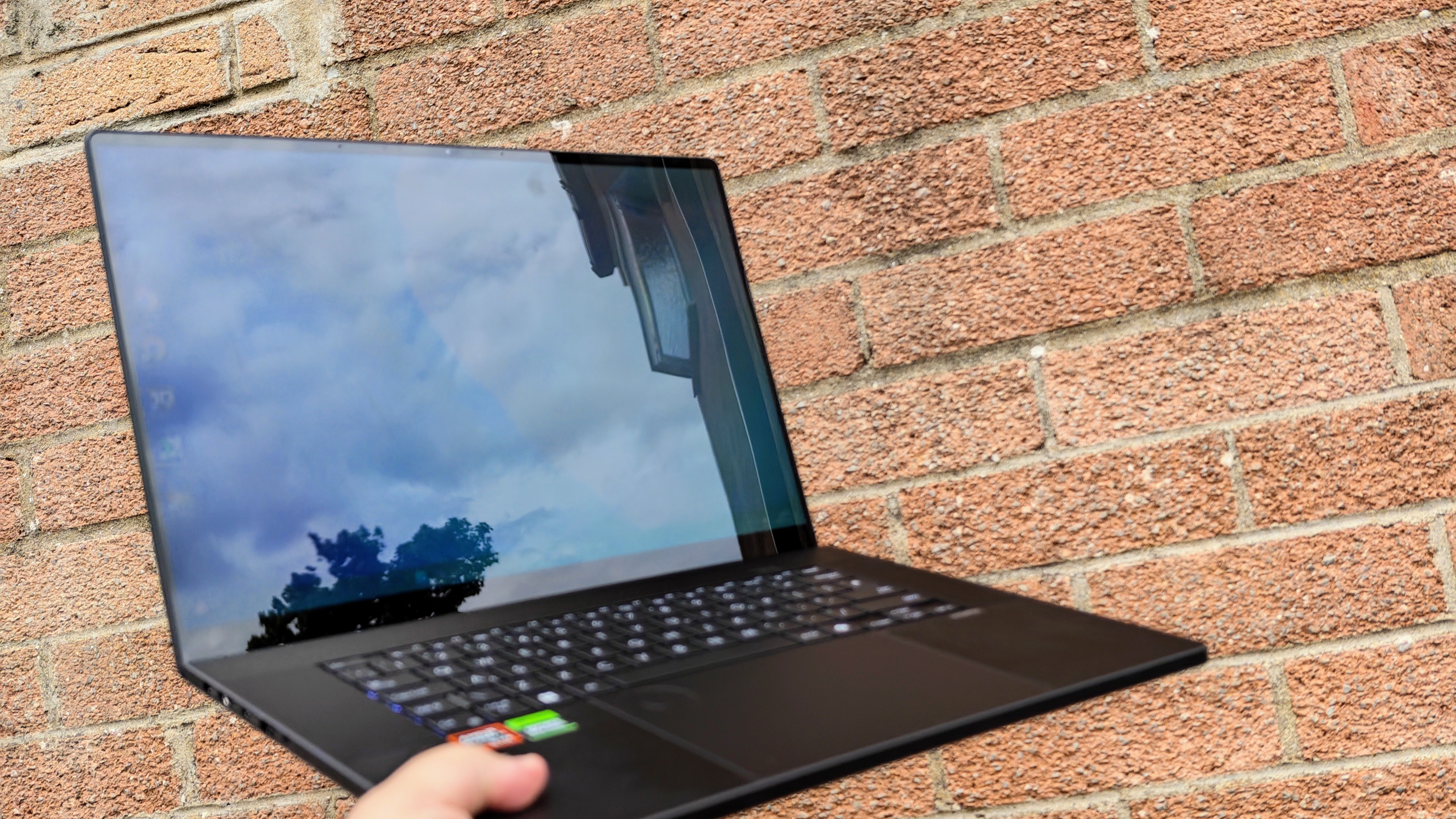
Also consider
Slightly smaller and cheaper than the flagship model, this compact ProArt model still has powerful internals, the full Creator Hub, and it's a 2-in-1.
Slightly pricier, but perfect if you want the ideal gaming monster (and don't mind the ear-splitting fan noise).
If you want a Mac that outperforms the P16, you'll have to step up to the considerably more expensive M3 Max-powered MacBook Pro. It is extremely great, though.
out of 10
The ASUS ProArt P16 is the flagship of ASUS' new ProArt range for creative professionals, and proudly succeeds last year's mighty Studiobook as a powerful, feature-rich, studio-ready leader to rule the varied laptop tribes beneath it. The gorgeous OLED touchscreen complements fearsome internals, which include a 40-series graphics card, an AMD-made NPU and up to 64GB of high-bandwidth RAM. It squares up to even the mightiest among laptops, the MacBook Pro, and if you ask me, comes out victorious.

Erlingur is the Tech Reviews Editor on Creative Bloq. Having worked on magazines devoted to Photoshop, films, history, and science for over 15 years, as well as working on Digital Camera World and Top Ten Reviews in more recent times, Erlingur has developed a passion for finding tech that helps people do their job, whatever it may be. He loves putting things to the test and seeing if they're all hyped up to be, to make sure people are getting what they're promised. Still can't get his wifi-only printer to connect to his computer.
